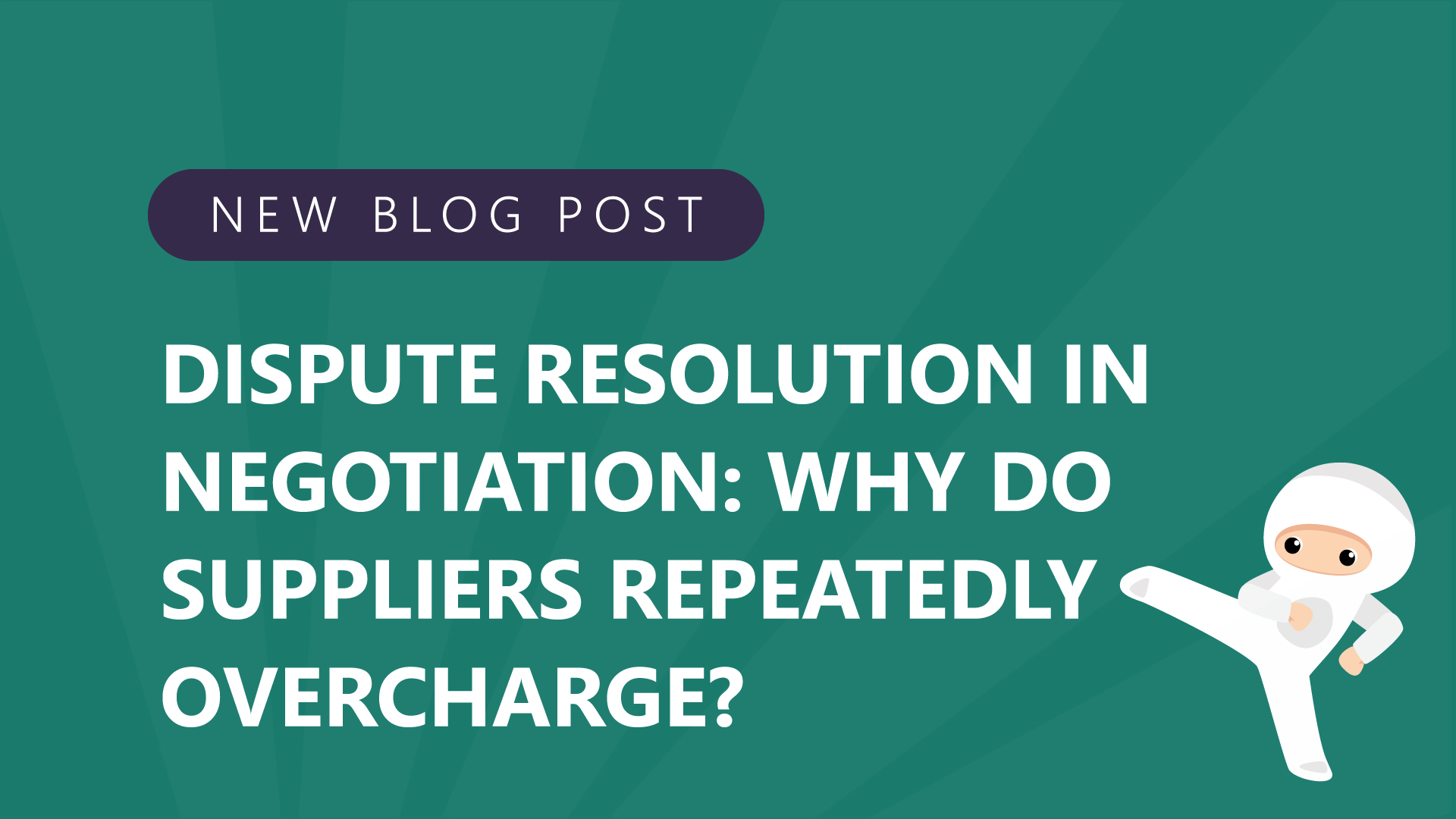Rich Ham—the CEO of Fine Tune—talks extensively about dispute resolution in episode 157 of the Negotiations Ninja podcast. Something he often comes across as a consultant is that suppliers owe his clients money. It’s often a substantial amount that hasn’t been managed over the course of the negotiated relationship.
Rich often sees charges for inventory that isn’t really there, peripheral charges added on invoices that don’t relate to a specific product or service, percentage-based charges that aren’t calculated correctly, and much more.
Why? Why do suppliers add erroneous charges and unsubstantiated fees?
It all comes down to pressure
Rich tends to see that pressures for growth on the supplier side have created incentives for suppliers to generate growth in ways that Rich would argue isn’t real—it’s about pushing buttons and pulling levers. People are being asked to do more with less. Resources aren’t robust.
In a high percentage of the scenarios Rich has been involved in, costs went up. They weren’t going up because demand was going up; they were going up because the suppliers were being pressured. Growth pressures have resulted in “fake” growth that causes spending to rise in undermanaged categories.
Rich shares another way you can illustrate the issue: A local pest control business has the contract to work with a local food plant. They do a quarter of a million-dollar fumigation event annually where the plant is shut down for days. But they know the problem is stemming from a crack in the foundation.
If the crack were fixed, fumigation wouldn’t be needed—but then they wouldn’t make continuous annual money from the fumigation. When you’re consistently making money off the underlying problems, why would there be an incentive to fix them? It takes different forms in every category that vary by industry and account type. Unfortunately, so many areas exist to hide profit.
How to stop the unmanaged spend
Fine Tune developed a proprietary software application that is built around the complex expenses that they manage. It’s called EMOAT, which stands for “Expense Management Optimization and Auditing Technology.” Rich likens it to a moat: “We built up a protective moat around our clients’ bottom line.” It helps them siphon out the product and services that aren’t really there.
Navigating the other side of the dispute
Through the process of dispute resolution with vendors, Rich’s clients are often tempted to end the relationship. They’re forced to ask hard questions: Do we maintain this relationship? Do we manage this relationship? Do we move this relationship forward? Do we find someone else?
The knee-jerk response is that you’d rather find someone else. But is the devil you know better than the devil you don’t?
Rich points out that at Fine Tune, they try to promote a non-emotional response to disputes that do arise. It could just as easily be an issue with other suppliers. They advocate for the client’s bottom line but emphasize that bringing emotions into the decision won’t help.
Even if you’d rather not work with a vendor that has slighted you, you often come out on the other side of a dispute resolution with the upper hand. Rich’s team will often have negotiated better terms and landed on a better working agreement that they wouldn’t get starting fresh with someone else.
Rich shares HOW they manage to come to a successful resolution in their

